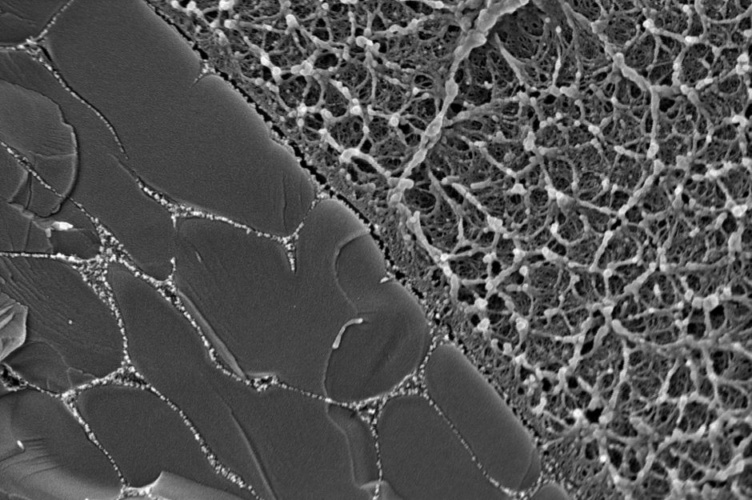New material mimics properties of cartilage
Engineers at Leeds University and Imperial College London have developed a load-bearing material that mimics human cartilage.

Researchers believe the new material could be used for a wide range of engineering purposes, including the potential for a new generation of lightweight bearings.
Cartilage — a soft fibrous tissue found around joints that provides protection from compressive loading generated by walking, running or lifting — is a bi-phasic porous material that exists in solid and fluid phases. It switches to its fluid phase by absorbing synovial fluid, a viscous substance produced in the joints.
This fluid lubricates the joints and when held in the porous matrix of the cartilage also provides a hydroelastic cushion against compressive forces. Because cartilage is porous, the synovial fluid eventually drains away and helps dissipate the energy forces travelling through the body, which protects joints from wear and tear and impact injuries. At this point, the cartilage returns to its solid phase and the cycle can be repeated.
Cartilage inspires new durable material for structural batteries
Register now to continue reading
Thanks for visiting The Engineer. You’ve now reached your monthly limit of news stories. Register for free to unlock unlimited access to all of our news coverage, as well as premium content including opinion, in-depth features and special reports.
Benefits of registering
-
In-depth insights and coverage of key emerging trends
-
Unrestricted access to special reports throughout the year
-
Daily technology news delivered straight to your inbox










Water Sector Talent Exodus Could Cripple The Sector
My local water company is Severn Trent which has a market capitalisation of £8.2 billion, made a pre-tax profit of £200 million in 2024 and is paying...